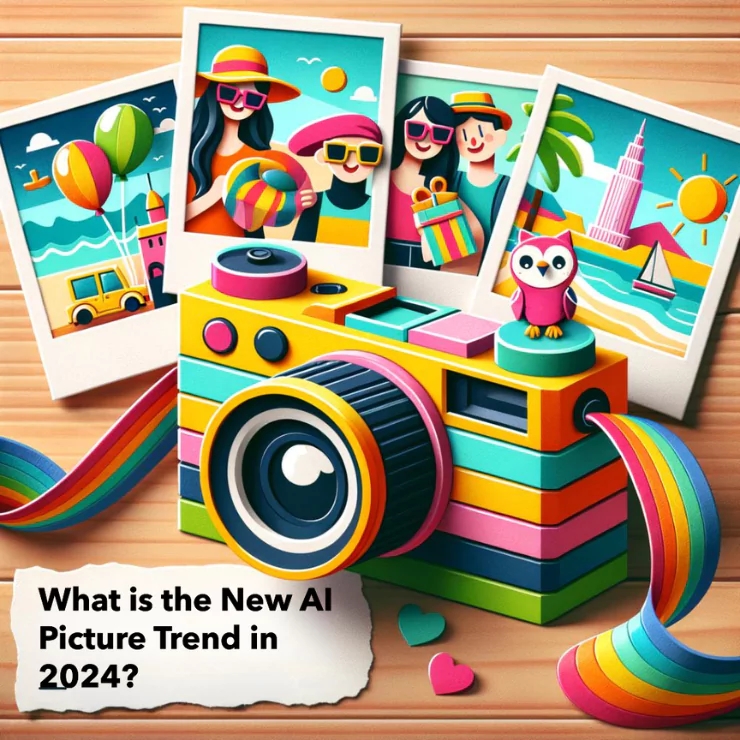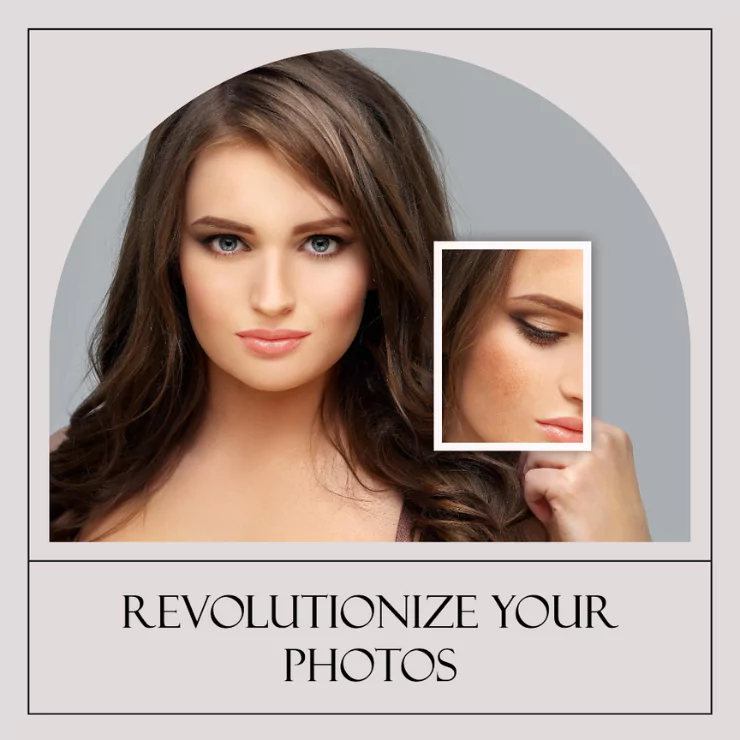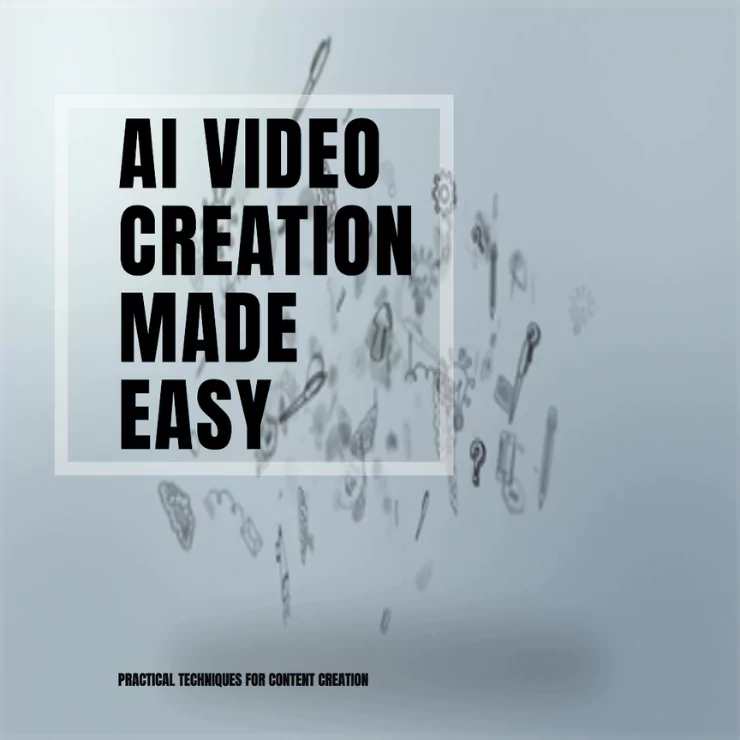The most captivating aspect of AI is its ability to generate and manipulate visual content, leading to a myriad of applications in various industries. It is evident that the New AI Picture Trend has come to stay, with hundreds of AI startups springing up every moment. It is only a matter of time before every aspect of our lives becomes AI-infused. In the last three (3) years, artificial intelligence has shown tremendous growth, allowing the widespread application. As we step into 2024, a fascinating new trend has emerged in the world of AI: the transformation of picture creation and manipulation.
Evolution of new AI picture Trends images Creation
The days of AI-generated graphics being only abstract representations or approximations are long gone. Thanks to developments in deep learning and generative models, artificial intelligence (AI) has advanced to the point that it can now create images that are on par with, if not better than, those produced by human artists.
One salient fact to understand about AI is that over 15 billion images have been created since 2022 using conceptual text-to-image algorithms, and this amount rivals the total number of photos taken from 1826 to 1975 (a span of 150 years). This data is wild and staggering, and it goes to show us just how fast the AI revolution is.
With a simple, clear, and descriptive prompt, you can generate realistic images that some photographers may never have the opportunity to take or artists the time to draw. If you decide to alter your image and give it another prompt, guess what? Your image will be adjusted properly and regenerated.
Algorithms and Models of Artificial Intelligence
Our investigation into the new AI image trend for 2024 delves into a wide range of models and algorithms that spur creativity. Gaining an understanding of these fundamental components helps us go forward into the future of visual creation while also illuminating where we are right now. Prior to continuing, it is essential to understand the key terms that support this development. Without further ado, let’s dissect a few integral ideas and concepts that are essential to this life-changing experience.
1. Deep Learning and Generative Models:
At the core of the emerging AI picture trend is deep learning, a subset of artificial intelligence that has revolutionized image processing. Generative models, exemplified by ZMO, have garnered attention for their capacity to create lifelike images from scratch or modify existing ones. These models are powered by large datasets, which enable them to learn complex patterns and characteristics with ease and produce visually spectacular results.



Consider ZMO, one of the pioneers in this field. ZMO uses its generative capabilities to solve practical issues, such as producing intricate architectural representations and even helping to build lifelike virtual worlds for training simulations. This demonstrates how AI’s generative powers go beyond creativity to useful applications in issue solving.
The area of fashion design is another example. ZMO can produce unique fashion concepts and fabric patterns by examining large datasets of apparel designs, textures, and styles. These AI-generated outputs can be used by designers to explore new design possibilities and new AI Picture Trends, expedite their creative process, and even forecast future fashion trends.



Additionally, ZMO’s generative capabilities let fashion firms tailor apparel designs to individual preferences, giving customers more engaging and personalized purchasing experiences. Consequently, ZMO’s influence goes beyond the creation of images; it also stimulates creativity and innovation in the fashion sector.
2. Hyper-Realistic Images:
One of the most remarkable advancements in the AI picture trend of 2024 is the surge of hyper-realistic images. Generative adversarial networks (GANs), such as DALL-E 2, MidJourney, and particularly ZMO, have demonstrated exceptional proficiency in crafting images virtually indistinguishable from real-world photographs. These AI marvels have redefined the boundaries of visual creativity, producing lifelike portraits and breathtaking landscapes that blur the distinction between reality and imagination.



Among these leading AI entities, ZMO stands out for its remarkable contribution. Leveraging its generative prowess, ZMO has been pivotal in various domains, including the marketing and advertising industries. These ZMO AI-generated images are used by brands and marketers to produce eye-catching commercials, product visualizations, and marketing campaigns. Using ZMO’s capabilities, marketers can create visually striking content that appeals to their target audience and increases brand awareness and engagement in a market that is becoming more and more competitive.
3. Style Transfer and Creative Expression:
The investigation of style transfer methods for artistic expression is another fascinating facet of the new AI picture craze. With the use of these algorithms, designers and artists may effortlessly combine the visual elements of one image to create compositions that are striking to the eye. AI-powered style transfer opens up a world of limitless possibilities for artistic exploration and invention, whether it includes turning a snapshot into a painting evoking the manner of Van Gogh or incorporating contemporary elements into timeless masterpieces.



Artists can push the boundaries of traditional artistic expression and inspire new kinds of creativity and inspiration in the digital age by skillfully combining many visual styles to produce distinctive and appealing compositions.
4. Personalized and Interactive Experiences:
AI completely transforms the way we interact with visual content, going beyond still images. AI-powered personalized experiences are prevalent, offering individualized suggestions and unique visuals according to user preferences. This includes everything from creating interactive storytelling experiences to suggesting customized artwork.



AI changes the visual media terrain, raising the bar for engagement and immersion. AI deepens its understanding with every engagement, providing experiences that are more personalized and rewarding. In addition to captivating consumers, this individualized approach encourages stronger relationships with visual content, which results in more meaningful interactions and experiences.



Ethical Considerations and Challenges
The emergence of the new AI picture trend brings with it remarkable advancements, yet it also presents significant ethical considerations and challenges. The potential misuse of AI-generated images for deceptive purposes, such as fabricating fake news or manipulating public opinion, underscores the critical need for responsible development and usage of AI technology. As AI becomes increasingly adept at crafting hyper-realistic visuals, the risk of misinformation and manipulation amplifies, necessitating stringent safeguards to mitigate such risks.



Moreover, concerns regarding data privacy and bias in AI algorithms loom large in the cyberspace of AI-driven visual content. The collection and utilization of vast amounts of data to train AI models raise concerns about the protection of individual privacy rights.
Additionally, the inherent biases present in datasets used to train AI algorithms can perpetuate inequalities and perpetuate harmful stereotypes in AI-generated visual content. Addressing these concerns requires the implementation of ethical guidelines and regulations to ensure fairness, transparency, and accountability in AI-driven visual media. By fostering a culture of responsible AI development and usage, we can harness the transformative potential of the New AI Picture Trend while mitigating its ethical risks and ensuring its positive impact on society.
Developments of Artificial Intelligence: The Revolutionaries
DALL-E:
DALL-E represents a significant breakthrough in artificial intelligence, namely in the area of image production. DALL-E, an OpenAI creation, New AI Picture Trends, demonstrates the ability of generative models to produce incredibly realistic and contextually appropriate visuals from written descriptions. Its name pays homage to both the surrealist Salvador Dali and the WALL-E character from Pixar, demonstrating its ability to create visually stimulating and varied content.



DALL-E is a perfect example of how AI can unleash creativity and push the limits of visual expression by creating fanciful creatures and rethinking common objects in novel ways.
Midjourney:
Another innovative player in AI is Midjourney, which is well-known for its ground-breaking research on generative adversarial networks (GANs). With a focus on producing hyper-realistic images, Midjourney’s GANs have gained recognition for their remarkable outputs that can equal real-world photos in terms of visual appeal. With applications in the entertainment, design, and advertising sectors, Midjourney’s innovations have raised the bar for AI-driven picture generating technologies and redefined the parameters of visual realism.



ZMO AI
ZMO has become a prominent player in the field of artificial intelligence, especially when it comes to creating and modifying visual content. ZMO’s sophisticated generative powers have allowed it to achieve notable breakthroughs across a range of industries, including virtual entertainment, New AI Picture Trends, AI models, and fashion visualization.



ZMO’s capacity to produce incredibly lifelike visuals and captivating backdrops for social media content creation and businesses alike has transformed a variety of sectors, including marketing, gaming, architecture, and advertising. Its contributions highlight how AI can fundamentally alter how humans view and engage with visual media, pushing the bounds of creativity and innovation to previously unheard-of levels.



Conclusion
As we look further into 2024, the new AI picture trend heralds a transformative era in creativity and expression. From hyper-realistic images to personalized experiences, AI-powered tools are reshaping the way we perceive and interact with visual content. However, as with any technological advancement, it is necessary to approach the development and deployment of AI with ethical considerations in mind, ensuring that these innovations benefit society while upholding principles of fairness, transparency, and accountability. As we navigate the evolving landscape of AI, embracing its potential while addressing its challenges will be key to unlocking its full transformative power in the realm of visual media.





